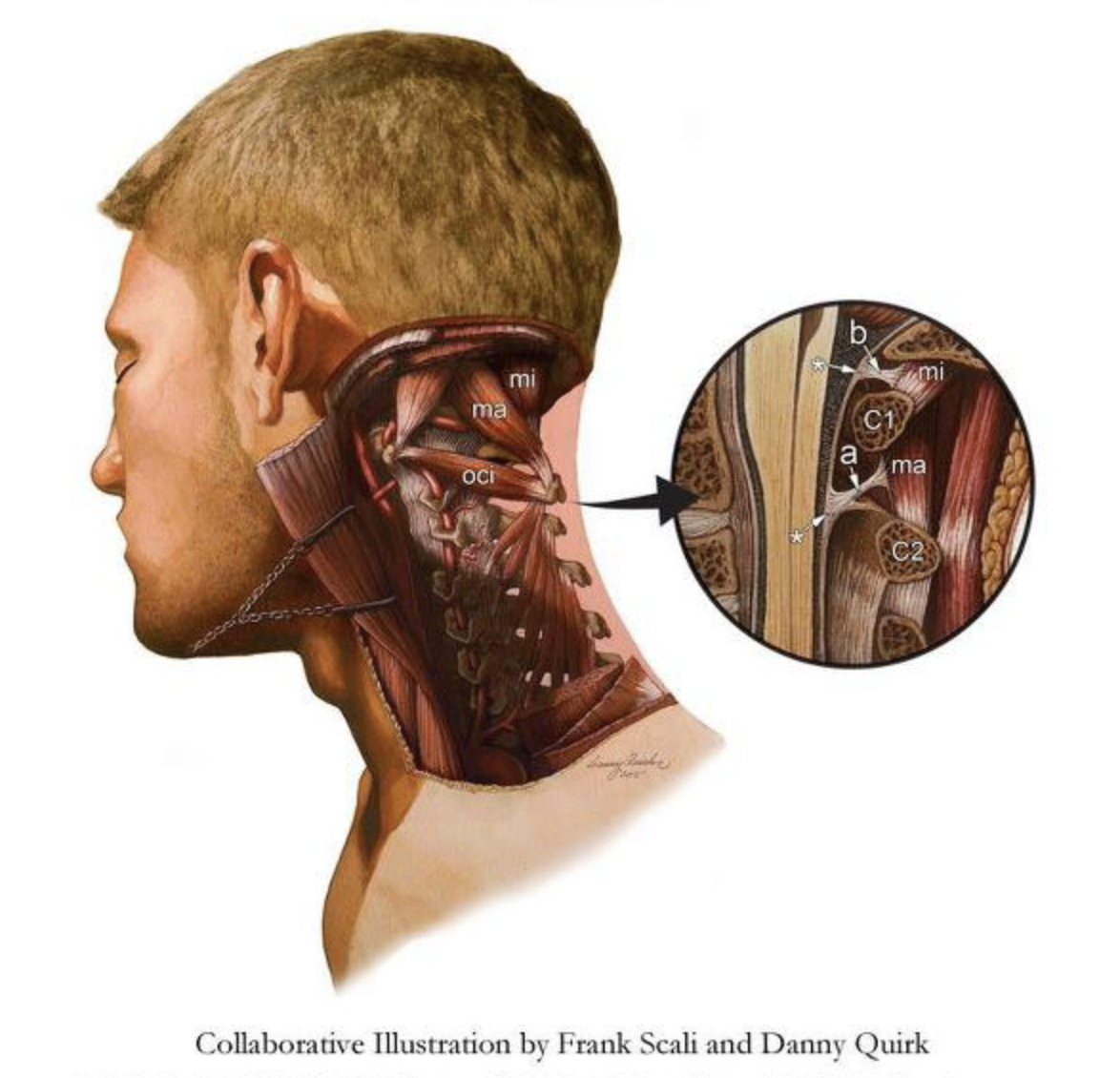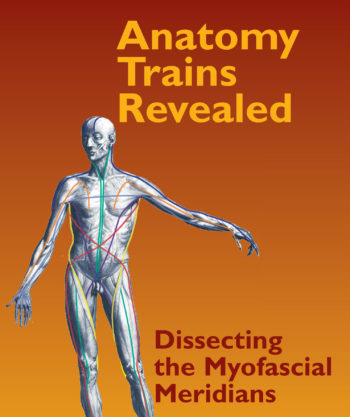Tom comments on this review:
by KOUROSH KAHKESHANI AND PETER J. WARD
Department of Biomedical Sciences, West Virginia School of Osteopathic Medicine, Lewisburg, West Virginia
Read the article above – which include some fantastic dissection images of the suboccipitals – for context on Tom’s comments below.

The Myodural bridge – somewhat like Andry Vleeming’s interfascial triangle – is easy to find when you know what you are looking for (and easy to cut if you don’t). The pictures in the above article will help you see exactly how the fibres in the mid-sagittal plane – essentially an extension of the nuchal ligament – go right between the two inner recti muscles, through the atlanto-occipital membrane (the uppermost ligamentum flavum)), hooking right onto the posterior surface of the dura. This is an obvious (well, ok, not so obvious, but evident) connection from the superficial to the deep, one that in this case allows us to look up. If this little piece of fascia is not present – as in Arnold-Chiarri malformation – when the neck is hyper-extended, the dura folds forward onto the brainstorm which does damage to the reticular activating system, causing speech, movement, and cognitive difficulties. So a very small connection from superficial to deep with very large implications.
But this myodural bridge is not the only place where there is a long reach into the fascial layers, or where small movements on the inside either allow or do not allow the larger movement on the outside. The umbilicus is a superficial doorway into the depths and folds of the entire peritoneum for the practitioner who knows its secrets, (stay tuned for our upcoming Deep Front Line webinar). The sternum is a similar door to the mediastinum. The SI joint ramifies out to the spine and gait when it is not working properly. Just behind the top of the ear is the asterion, where the scalp is tied down to (and thus gives access to) the tentorium around the brain. And there are other un-obvious connections, like the extensive upward signaling the vagus nerve can send up the brain from the gut or the lymphatic drainage from the brain they learned about last year.
Although these connection are fun and important to learn about, there an argument for saying that these kind of direct fascial or fluid connections are more common in the body than we thought, that we are breaking these connections every time we part the flesh to see anatomy. The exception is the part that is truly lubricated enough to slide on another. Two adjacent structures in the body are connected? Big whoop. A synovial joint? Now that’s a miracle.
Recommended
Anatomy Trains Revealed: Dissecting the Myofascial Meridians
$49.95Using real-time classroom video and photos, this 3-video set presents an unfolding firsthand voyage of discovery in the field of manual and movement therapies – a unique 21st century view of fascial anatomy in manual and movement therapy unexplored from the first dissections in the Renaissance until now. Thomas Myers, author of Anatomy Trains, takes… Read more
Add to cart






